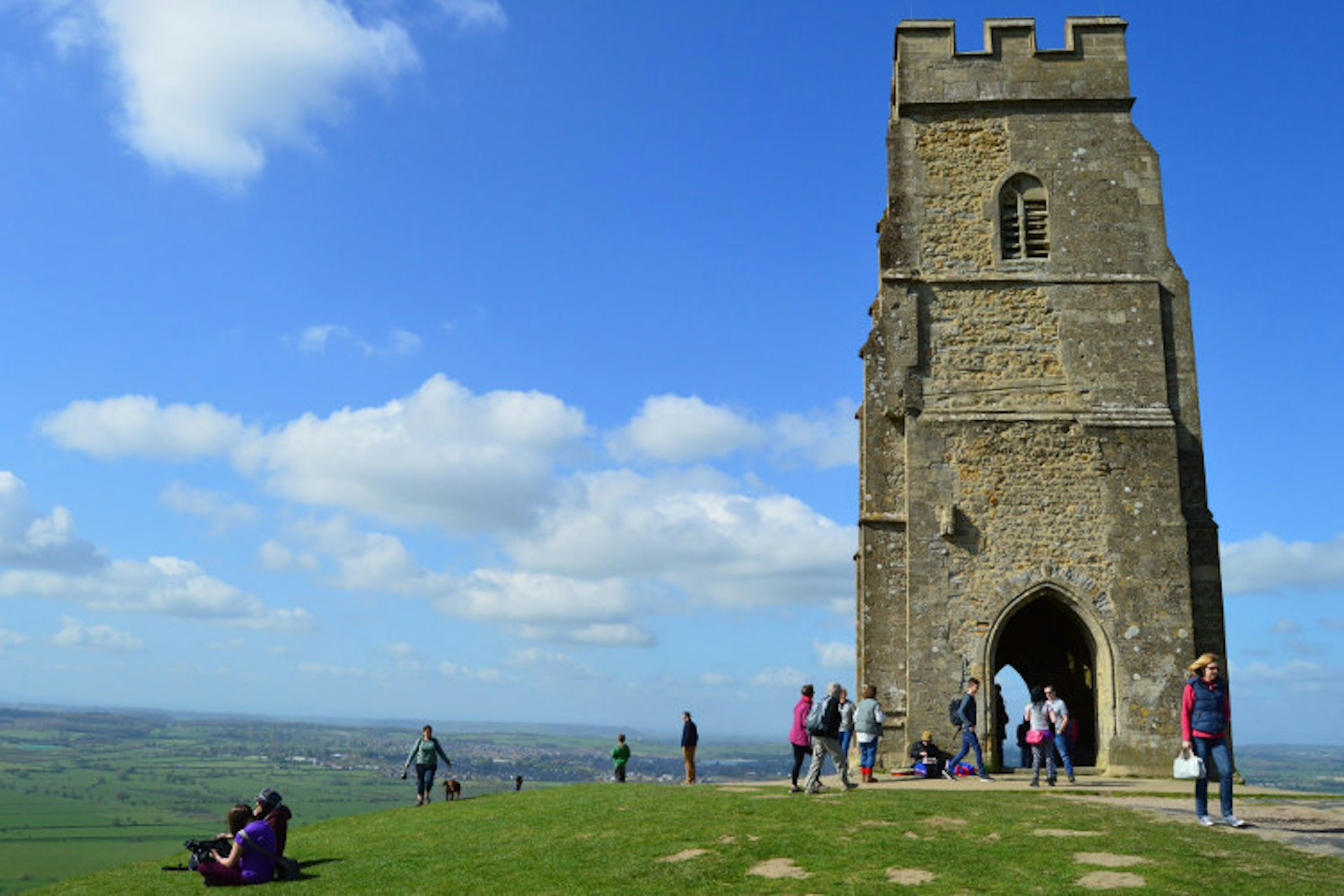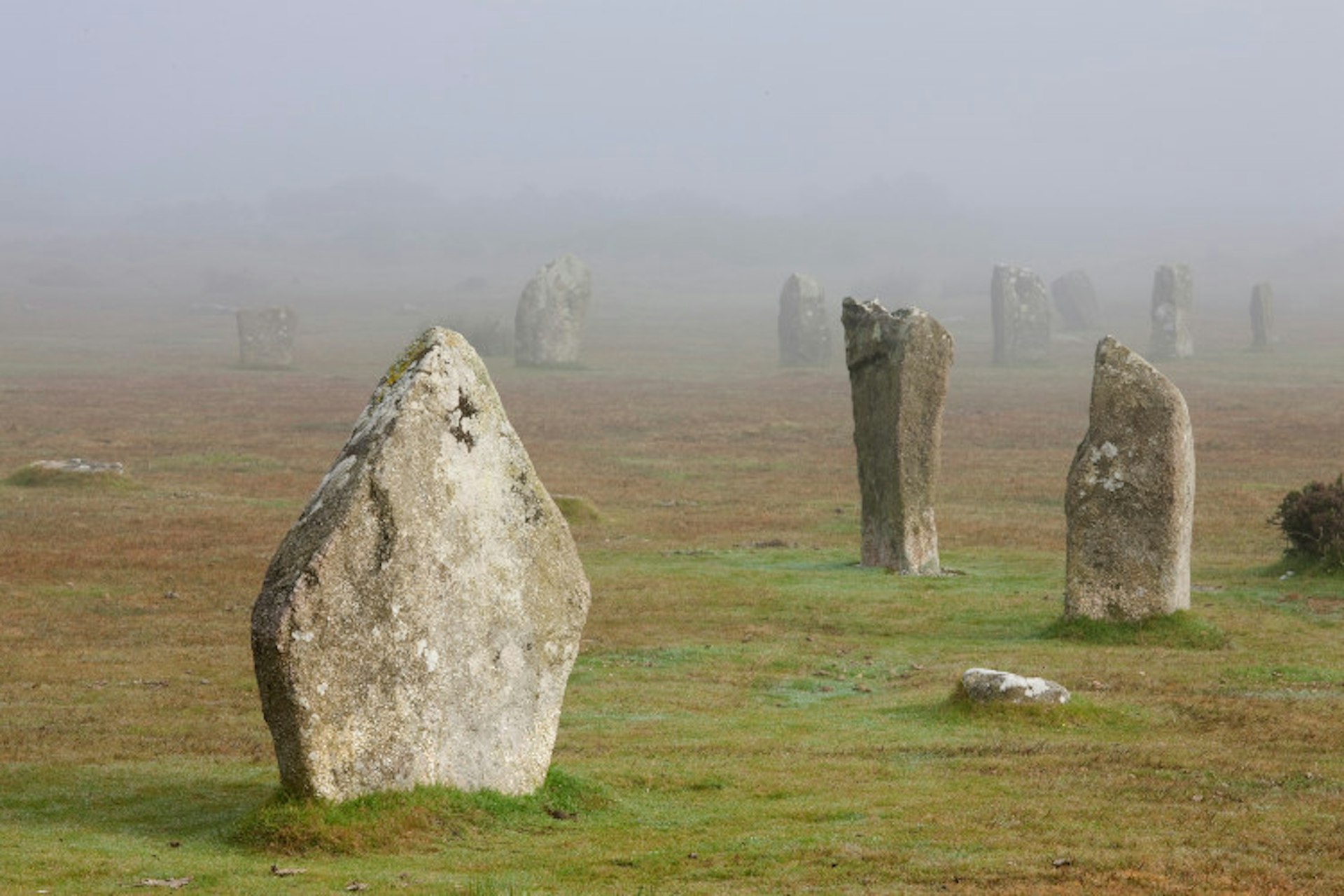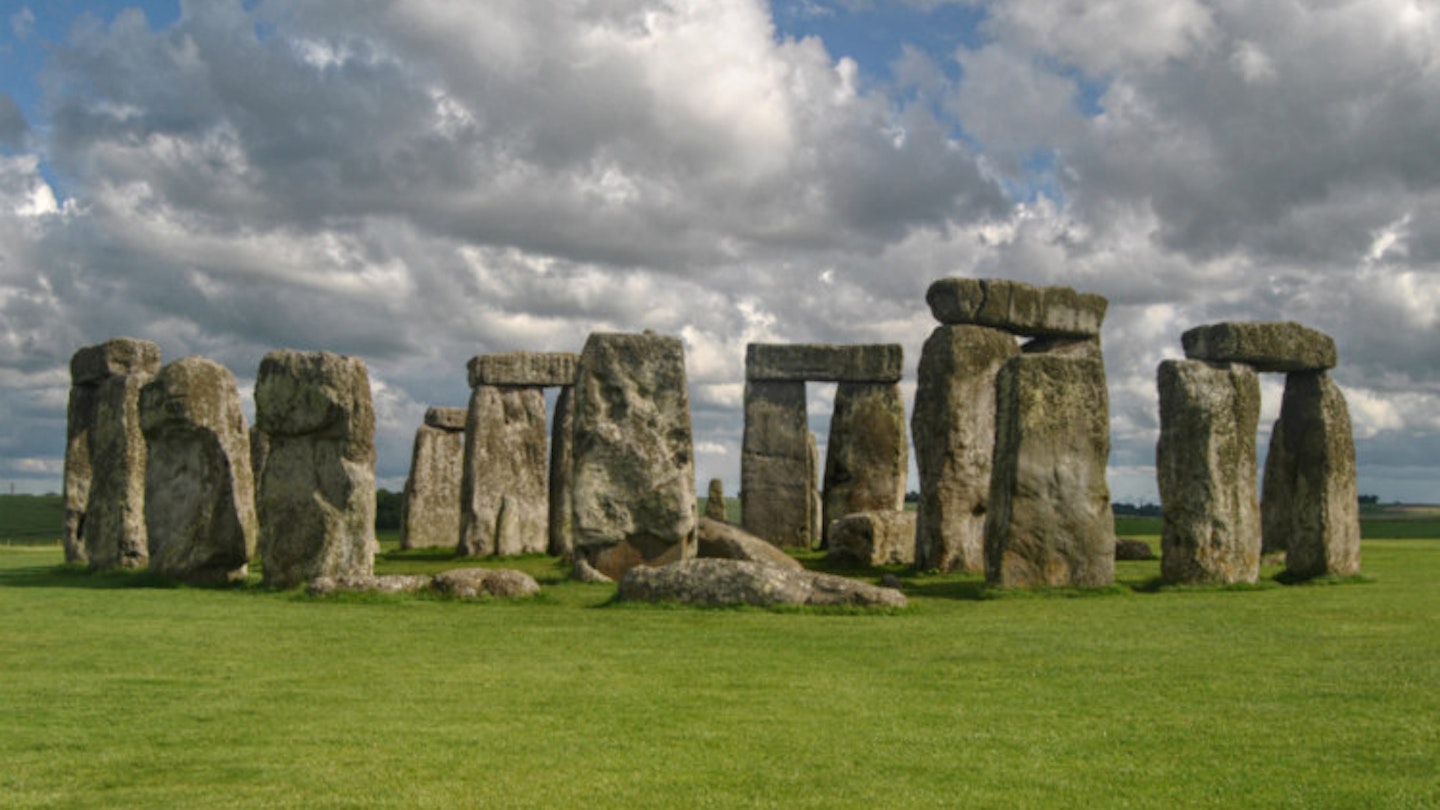Southwest England’s very soil is steeped with mystery. Travellers here encounter crumbling abbeys and millennia-old monoliths, and are bewitched by dark fairytales and modern folklore. Historians still struggle to unravel the true meaning of many of these places. These five sites in southwest England are especially rich in unsolved mysteries – and visiting is sure to spark elation and awe.
Stonehenge: how was Wiltshire’s famous stone circle built?

They are sacred to Britain’s pagan community and iconic worldwide, but more than one visitor faced with Stonehenge has muttered, ‘Is that it?’ Yet it only takes a little reflection on the feat of assembling this ancient stone circle to leave visitors spellbound.
The stones, some weighing up to 30 tonnes, have been traced to sites as far afield as Preseli Hills in southwest Wales (250km away). Archaeologists scratched their heads, assuming the movement of glaciers had deposited them in Salisbury, but radioactive dating soon discounted that theory. Incredibly, human effort (with a little help from England’s waterways) brought the stones to the sacred site, where they were chiselled using crude hammer-stones into the smooth monoliths we know today. Impressive, considering our best estimate of its construction is 2400BC.
A newly revealed pattern on the grass around the stones suggests it was once a perfect circle, but attempts to pin down the site’s meaning have fallen flat. There’s increasing evidence that Stonehenge was built to celebrate the winter solstice, but its spiritual significance is likely to have changed over time: it was a burial site as early as 3000BC, it may have been used to help calculate the timing of eclipses, and today it’s one of Britain’s most significant sites for a vibrant community of neopagans.
See for yourself: Stonehenge is 40 minutes from picturesque cathedral city Salisbury, or a two-hour drive from London. Day-trips from the capital abound (try Viator for a whistlestop tour). But if you have time, wander the circle itself or linger to explore the state-of-the-art visitors centre, just opened last year, and let the site work its magic.
Glastonbury: is this the burial place of King Arthur?

Even those not au fait with England’s 6th century history have heard tales of King Arthur. The facts may have been braided with myth and invention, but the image of Arthur as Britain’s brave defender against the Saxons has endured. And it’s inspired generations to brandish imaginary Excaliburs and wonder how they’d fare in a battle (not well, we think).
Southwest England has plenty of sights steeped in Arthurian legend, from Tintagel Castle to Bath. But Glastonbury, thought to be the resting place of King Arthur and the final destination of the Holy Grail, is the most beguiling. Twelfth-century monks first circulated the rumour that Glastonbury was the mysterious island of Avalon after claiming to find a grave with an inscription pointing to King Arthur. Historians suggest they were simply raising cash for their abbey, but the area’s geography offers some tantalising suggestions that this might be the right site. It’s written that King Arthur was taken by boat to the Isle of Avalon to be healed, and Glastonbury – with a monastery (where the sick were treated) and formerly an island, fits the bill.
Archaeologists have since dug the site and found evidence of medieval excavations, and an old grave. But with the marker stone mysteriously missing, the trail has gone cold. Nonetheless, Glastonbury has become forever linked with the legendary king.
See for yourself: Glastonbury is an hour’s drive from the Roman city of Bath and makes an excellent day trip. King Arthur is thought to be buried at Glastonbury Abbey; one of England’s oldest abbeys, the ruin is worth half a day of exploring, whether or not you believe the hype.
Cerne Abbas: what’s the meaning of Dorset’s chalk giant?

England has other enormous hill carvings, but none with the iconic quality (nor eyebrow-raising properties) of the Cerne Abbas giant. Etched into the grass and lined with chalk, the giant is 55m high and 51m wide, but it’s his – how shall we put it? – mighty member that has been causing Englishmen to drop their monocles for centuries.
Once thought to be a Celtic god, many historians have linked his warrior stance to Roman god Hercules. Excavations showing evidence of an outline of a skin draped over his arm seemed to support this. But historians have been hard pressed to find a reference to the giant dating earlier than the 17th century. That would make him a mere youngster compared to some of England’s other chalk carvings (the Uffington White Horse is a whopping 3000 years old). The giant’s more modern origins might be explained by him being a parody of Oliver Cromwell (mocked as a ‘modern Hercules’).
The Victorians chose to ignore the giant’s manhood (all 11m of it), leaving it out of travel brochures and maps, but rumours of its fertility-boosting properties have endured and the site remains sacred for pagan worshippers. Ever since being listed as one of England’s scheduled monuments in 1920, the giant has been a focus of national pride (and affectionate ribbing).
See for yourself: the giant is just north of Dorset village of Cerne Abbas; snap a picture from the viewing point off the A352 road or walk around the chalk outline yourself. Learn more at nationaltrust.org.uk.
Old Sarum: how did this thriving ancient settlement become a ghost town?

This Iron Age hill fort, looming majestically over Salisbury city, withstood Roman conquest, stood firm as a Norman military base and saw a succession of medieval kings sweep through its walls. But the most curious part of Old Sarum’s 5000-year history is the mass exodus that transformed it from a castle stronghold with two cathedrals into a ghost town.
A bishop with a grudge is now thought to have caused bustling Old Sarum to crumble and be left empty. Old records reveal 13th-century bishop Richard Poore considered Old Sarum a wretched place; above all he loathed the lord of Old Sarum castle and petitioned the Pope to have another cathedral built. This newer construction continues to stand proudly in Salisbury city centre, and boasts the tallest spire in the United Kingdom. But as people left to ‘New Sarum’ (now Salisbury), Old Sarum spiralled into decline and was leveraged for political influence (despite no population, it still had two parliamentary seats, up for grabs for the highest bidder). It was only in the 19th century when there was finally a clampdown on ‘rotten boroughs’ like Old Sarum, and the site drifted into obscurity. Today Old Sarum is a hauntingly quiet retreat, brooding quietly next to its sister settlement Salisbury.
See for yourself: Old Sarum is a 10-minute bus ride north of Salisbury city centre; jump on the 8 or X5 from Castle Street. Allow half a day to walk the ramparts and admire views over the city. Learn more on english-heritage.org.uk.
Cornwall: does a ravenous beast prowl Bodmin Moor?

Mysterious howls. Animal attacks in the dead of night. The blood-curdling tales of Cornwall’s Beast of Bodmin will set travellers either hurrying home before nightfall or chortling into their cream teas.
Cornwall’s rugged coast and windswept moors teem with myths, from sacred healing stones (Nancledra) to mermaids (Zennor). This modern mystery shows that not all of them date to a forgotten time. Stories of a deadly black feline attacking farm animals and stalking humans have proved surprisingly persistent. Tabloid newspapers periodically emblazon their pages with (suspiciously blurry) images of an unidentified animal. Local theories range from escaped zoo animals to witnesses having had one too many Cornish ales. But before you dismiss the idle chatter, consider that in the 1990s the British government considered more than 60 sightings serious enough to warrant an official investigation.
See for yourself: Bodmin Moor is remarkably beautiful, and we think you can wander the heather-streaked uplands without encountering worse than a few grazing ponies. Highlights of a hike in the area are the Neolithic huts in Leskernick Hill, medieval stone bridges and Golitha Falls.












